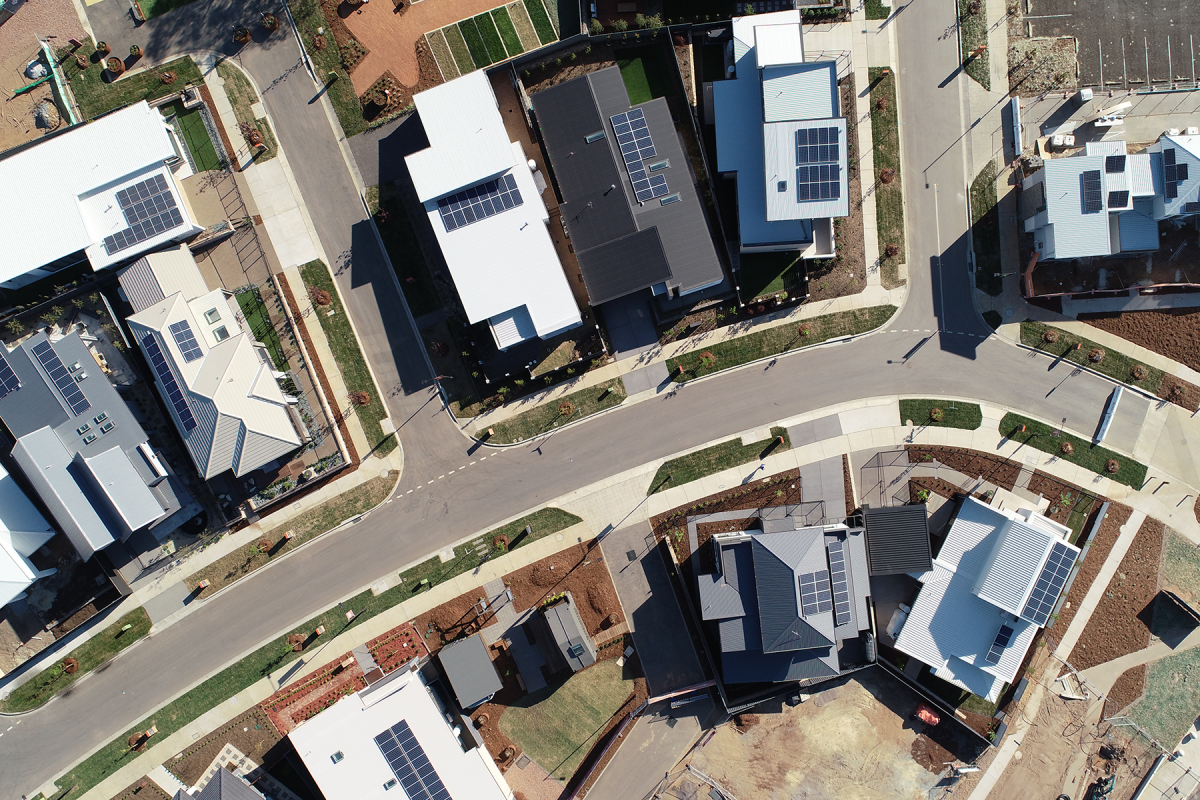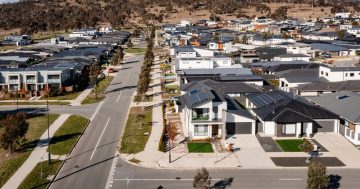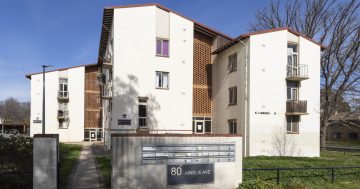
The Ginninderry GX display village: Sustainability is one of the top three reasons people purchase land at Ginninderry. Photo: Ginninderry.
The ACT’s push for the National Construction Code to be updated to include a minimum seven-star energy efficiency requirement has industry backing as buyers increasingly put comfort and cheaper utility bills on their wishlists for new homes.
The ACT will call for the change when Minister for Sustainable Building and Construction Rebecca Vassarotti attends Friday’s Building Ministers Meeting.
The meeting will consider proposed changes that would increase the minimum energy efficiency requirements for new homes from a six to seven-star energy rating.
Ms Vassarotti said the ACT would call for a seven-star energy rating to be the bare minimum.
She said national standards had not changed in more than a decade and were falling further and further behind international and best-practice standards.
“Everyone should be able to live in a home that is comfortable and energy efficient, but due to poor energy efficiency in our buildings, many people are living in homes that are expensive to heat in winter and cool in summer,” she said.
“Raising energy efficiency requirements for new homes to a minimum seven-star rating will significantly lower household energy bills, cut Australia’s emissions and reduce the social inequality faced by renters.”

The energy-efficient Flexi-living Series at Ginninderry.
Ms Vassarotti said conservative Federal Government modelling had shown installing energy efficiency measures meant Canberra homeowners would be ahead by $107 on their energy bills in their first year after purchase, taking into account implementation costs.
She said many renters suffered higher energy bills and sometimes dangerously cold or hot houses, which was why the ACT was implementing minimum standards for ceiling insulation in rental properties.
Insulation was one way to boost the energy efficiency rating of a property, but there were cost-free measures for new homes, according to Sustainability Manager Jessica Stewart at the Ginninderry development, where all new homes in the new suburb of Macnamara will have a seven-star Nationwide House Energy Rating Scheme (NatHERS) minimum requirement.
Ms Stewart said choosing good orientation with north-facing living spaces or reducing the size of south and west-facing windows were the most cost-effective ways of increasing the star rating of a new home.
Other measures included double glazing and choosing the right construction materials.
“The easiest/cheapest way to get to seven stars is to look at the design and orientation of your home first and use the NatHERS software early in the design phase of your home to optimise where to put the extra effort/cost of adding insulation or increasing the quality of your windows,” she said.
Ms Stewart said cost should not be a barrier and the NatHERS software that was available could help people save money on their house build.
She said that in Canberra, a seven-star home was predicted to use 27 per cent less energy to heat and cool than a 6-star home, depending on the quality and size of the build.
“‘Sustainability’ is still one of the top three reasons people purchase land at Ginninderry alongside location and price,” Ms Stewart said.
“Along with Ginninderry being all-electric and requiring all homes to have solar panels, the move to seven stars is in line with our commitment to being a more sustainable community, saving residents money along the way.”
While Strathnairn, Ginnindery’s first suburb, only had a six-star minimum requirement, homeowners were not stopping there.
“The average star rating of all homes constructed in Strathnairn is already 6.5 stars and over 20 per cent of all homes are already seven stars or higher, so perhaps the benefits are already being understood by our purchasers,” Ms Stewart said.

A Commonsense Sustainability display home at Ginninderry: built for winter warmth and summer cool.
Ms Stewart said any drive towards more efficient and higher quality building construction nationally should be supported.
“As Canberra is a small jurisdiction, having a national approach to increasing minimum requirements means there will be less confusion for the building industry,” she said.
Both the Property Council and Master Builders are backing the energy efficiency update.
But Master Builders ACT CEO Michael Hopkins said a considered and planned transitional period was needed.
He said Master Builders ACT had proposed a three-year National Construction Code transition period and for Development Approvals granted before the commencement date to be recognised.
“In order for the industry to adapt to these changes, sufficient time needs to be allowed to develop and deliver education for the sector and regulators,” he said.
Mr Hopkins said there needed to be cross-border consistency as most ACT-based builders, subcontractors, suppliers, designers and architects worked across the ACT/NSW boundary.
Property Council of Australia acting ACT Executive Director Adele Lausberg said increasing the minimum energy efficiency ratings in new homes would slash the energy bills of Canberrans, ease long-term cost-of-living pressures and support the Territory’s net-zero emission ambitions.
“Our political leaders have an opportunity to demonstrate their commitment to reducing emissions and cost of living pressures by implementing these amendments,” she said.



















